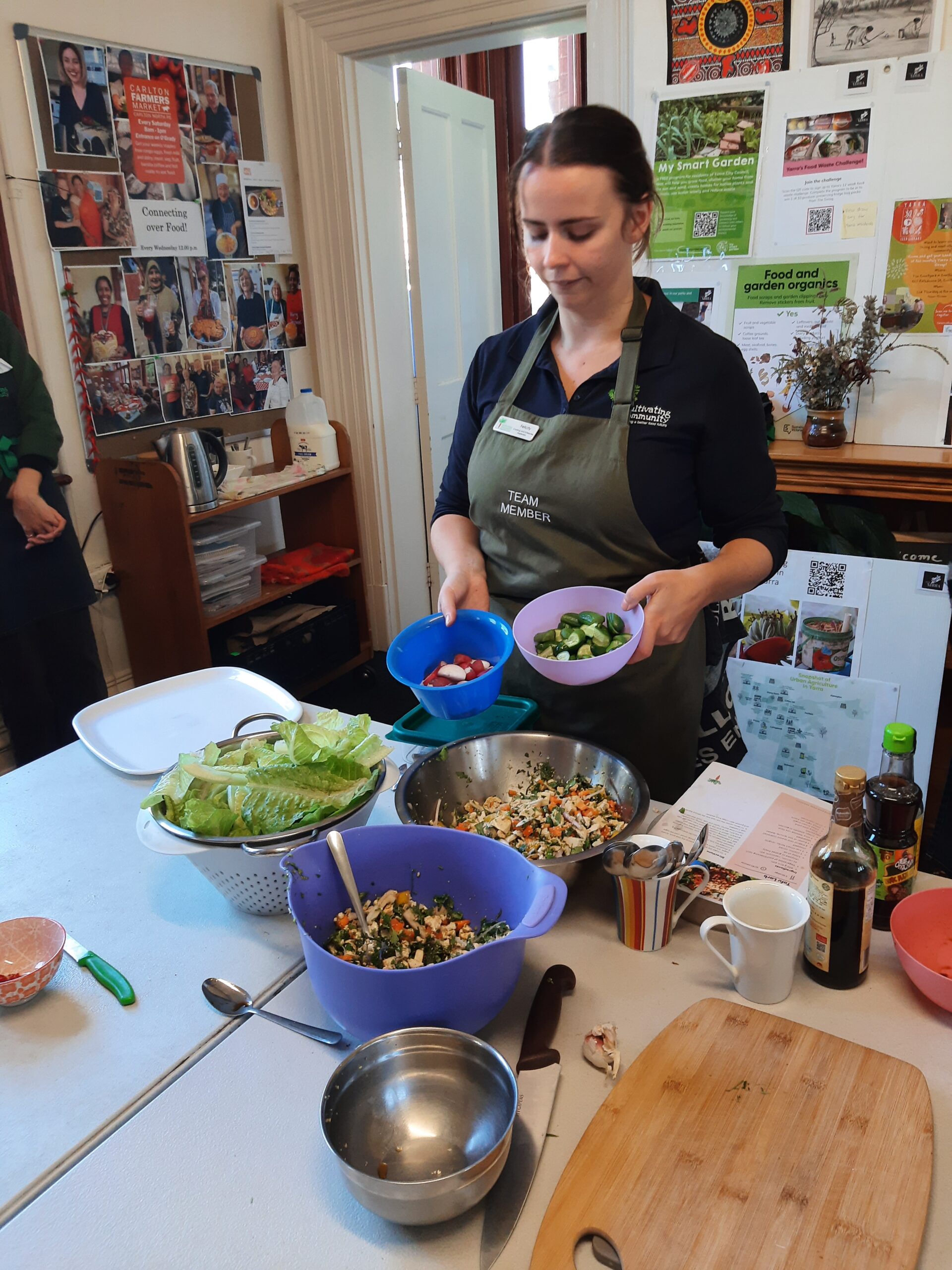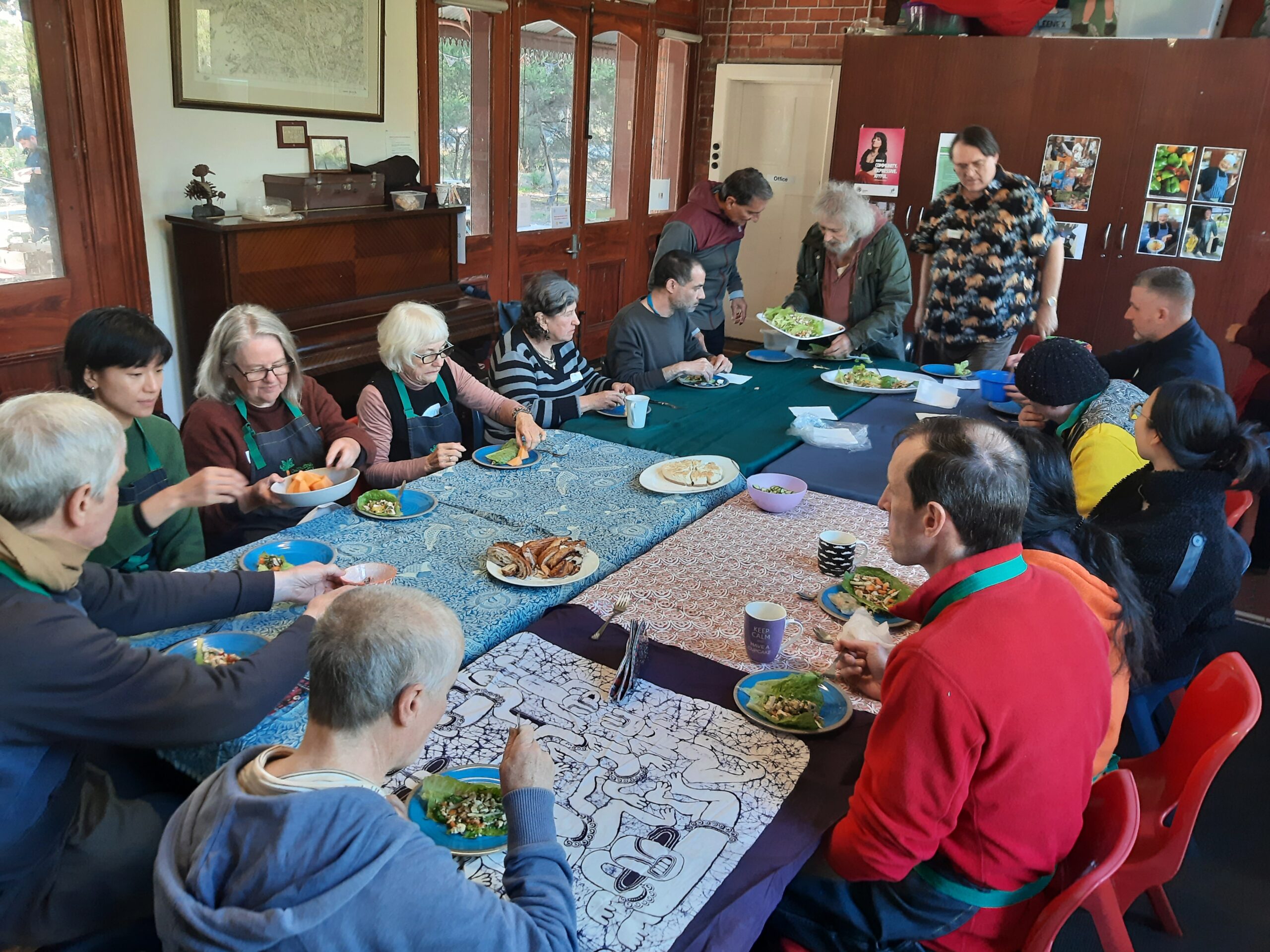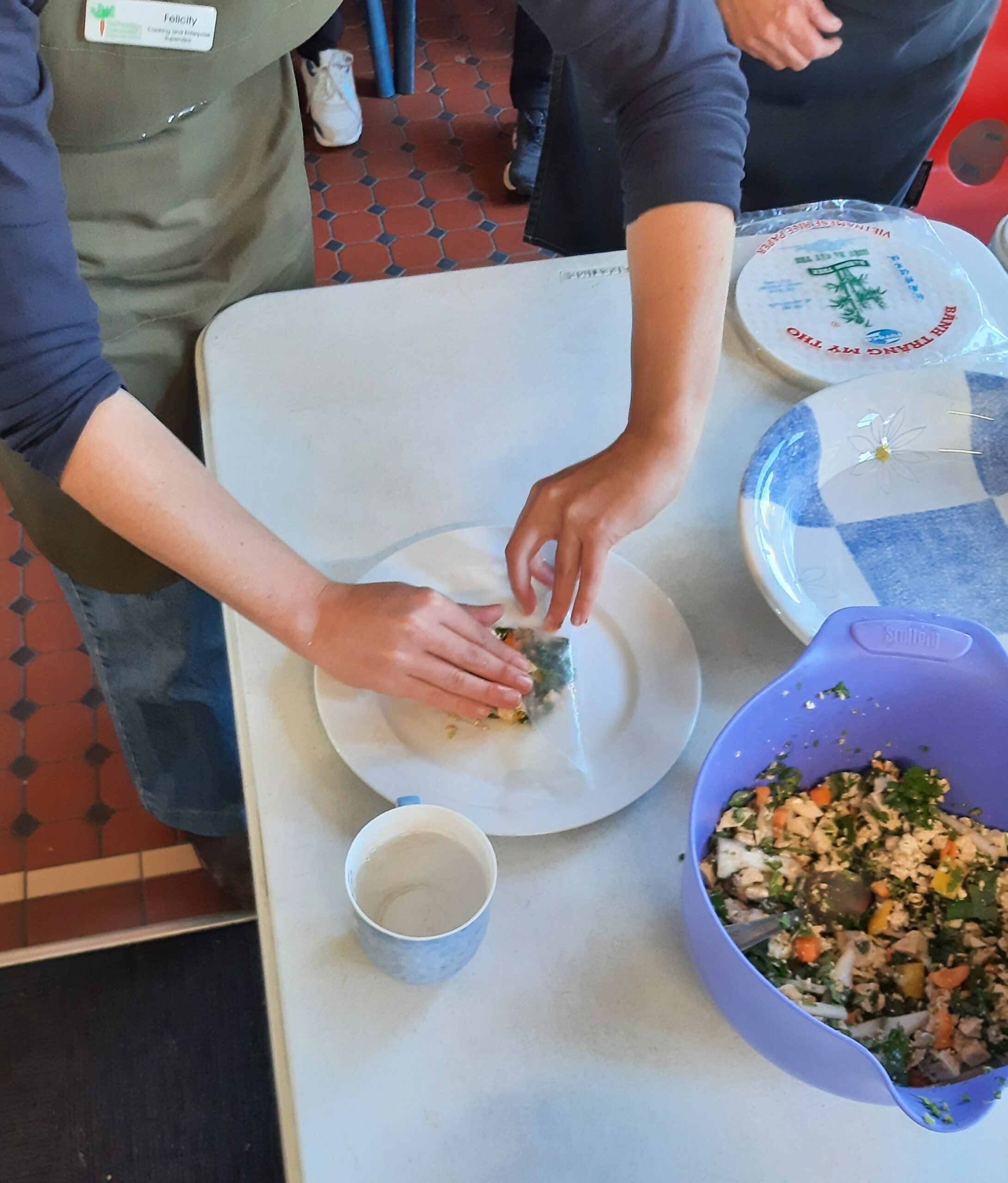Cooking for the Planet
Notes prepared by Cultivating Community, 2025
Cooking with the Seasons
When thinking about cooking with sustainability in mind, one of the most important things to consider is seasonality. If you purchase what’s in season in your local area it will reduce energy inputs, packaging and the food miles required to get the product into your shopping trolley. Food that’s picked and served in season is often the tastiest too!
If you’re fortunate enough to have a garden space, the best way to check what’s in season is to see what’s fruiting. If you’re only getting cabbages and lettuces, probably not the ideal time of year to plan your meals around tomato salad! The following guide can be used as a start to understand what is available in Melbourne at different times of year.
The ongoing effects of climate change on our seasons has and will continue to affect produce availability. If you can, head out to a farmers’ market to get more insight into how current seasonal changes are affecting crops and see what’s growing in our local regions. Often stallholders will be able to give you advice on recipe suggestions or best ways to store the produce they’re selling.
| Autumn (March April May) | Winter (June, July, August) | |
|---|---|---|
| Fruiting | Tomatoes (last of) | Snow peas |
| Chili (last of) | ||
| Capsicum (last of) | ||
| Eggplant (last of) | ||
| Long melon (last of) | ||
| Snake gourd (last of) | ||
| Pumpkin (last of) | ||
| Snow peas | ||
| Limes | ||
| Root | Sweet potato | Carrots |
| Radish (daikon or french breakfast) | Radish (daikon or french breakfast) | |
| Jerusuleum artichoke | ||
| Salsify | ||
| Brassicas | Pak choi | Cabbage |
| Bok choi | Broccoli | |
| Bunching broccolini | ||
| Pak choi | ||
| Bok choi | ||
| Greens | Swiss chard (rainbow) | Celery |
| Kale | Mizuna | |
| Lettuce cos | Sorrel | |
| Lettuce butterhead (red & green) | Kale | |
| Celery | Celtuce | |
| Sorrel | Mustard | |
| Mizuna | Chopsuey flower | |
| Herbs | Basil (last of) | Rosemary |
| Chives (last of) | ||
| Coriander | ||
| Parsley | ||
| Garlic chives | ||
| Rosemary |
Reducing Food Waste
Another crucial factor in cooking sustainably, is reducing food waste. To reduce carbon emissions and bring down your own food costs- always aim to use as much of your fresh produce as possible. Here are a few easy ways to cut back down food waste in your home:
- Items like herb stems, carrot tops and onion skins can be added to meat and vegetable stocks. Keep a container in the freezer for adding day-to-day scraps and then boil up a batch once the container is full
- Blend and freeze herbs, citrus juice or garlic into ice cubes trays ready to add straight into dishes throughout the year, no matter what the season
- Citrus zest can be easily frozen in containers or snap lock bags
- Share your harvests! If you have an abundance of produce from your own garden, share it with neighbours, family, friends and colleagues to stop it from turning into waste after such effort has been put into growing it
- Keep fresh produce out of plastic! Lots of uncut vegetables are fine just as they are in the fridge and avoiding cling wrap can stop excess moisture forming which often leads to faster deterioration. Items like spring onions and coriander can benefit from their roots being placed in a glass of water and other soft herbs are often best wrapped in a damp cloth/towel before being placed into the vegetable crisper
- Transform your leftovers into new dishes to avoid “meal boredom” and ensure they get eaten. Whether it be adding a new side, turning vegetables into burgers or making dumpling fillings, there’s lots of ways to get creative and stop your leftovers from ending up in the bin

Plan ahead
Having a look in your fridge, freezer and pantry prior to doing your weekly shop is always best practice. Ask yourself:
- What produce needs to be used first and what dishes could I prepare using this?
- What recipes can I make based on the current season?
- How many people am I cooking for? This helps avoid overshopping and ending up with large amounts of leftovers
- How can I use one ingredient in more than 1 meal? If you only need half a bunch of spring onions for one recipe, what other recipes might you be able to add the other half of the bunch to?
Today’s recipe is a great way to use up whatever scraps you have lying in the bottom of your fridge and also get 2 meals out of 1!
Adapted from an original recipe by Hetty Mckinnon
Low Waste Tofu Larb: Serves 4 For the Salad

Low Waste Tofu Larb: Serves 4 For the Salad
- 400 g firm tofu, or if you’re a meat eater- you can use pork or chicken mince, just fry it off first and cool before adding your salad ingredients
- Salad vegetables of your choosing such as carrots, capsicum, cucumbers etc, chopped finely or grated. This is a great time to used up whatever scraps you have in the bottom of your fridge!
- 1tbsp of neutral oil
- 1 shallot, finely sliced
- 4cm lemongrass, finely sliced or blended into a paste
- 1 cup mixed herbs, roughly chopped (our favourites are coriander, mint and Thai basil!)
- 4 Makrut lime leaves, finely shredded
- 1 butter or cos lettuce, leaves separated
- Crispy shallots, sliced chill and lime wedges to garnish
For the Dressing
- 4tbsp lime juice
- 3tbsp brown sugar
- 2tbsp light soy sauce
- Chilli (optional)
Method
- To make the dressing: combine the lime juice, brown sugar, soy sauce and chilli if using. Give a good mix and then set aside
- In a separate bowl, crumble the tofu into fine chunks
- Heat a frying pan over medium-high and add 1 tablespoon oil. Add the lemongrass and shallot and cook, stirring constantly, until just softened.
- Remove from heat and add to the tofu, along with the dressing, makrut lime leaves, herbs and veg. Taste and mix up some more dressing or season if needed.
- To serve, spoon the tofu larb into the lettuce leaves and garnish with crispy fried shallots, chilli and lime wedges

Leftover Larb Rice Paper Dumplings
If you end up with leftovers of this dish, wrap a small spoonful of the mixture into 2 layers of soaked rice paper and seal into a square shape.
Either eat as is or fry in vegetable over a medium heat for delicious crispy edges! Mix up some extra dressing to be used as a dipping sauce as well
Compost Notes:
For any minimal amounts of waste you end up with from this dish ensure that you do compost etiher at home or via your FOGO bins. Always check with your local council what can go into your FOGO bins and make sure to remove any rubber bands, plastic packaging and produce stickers.


